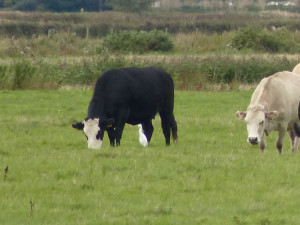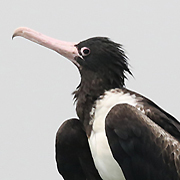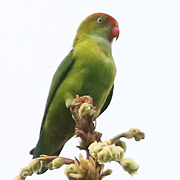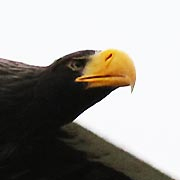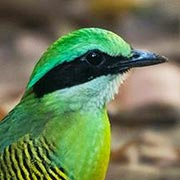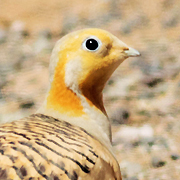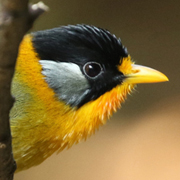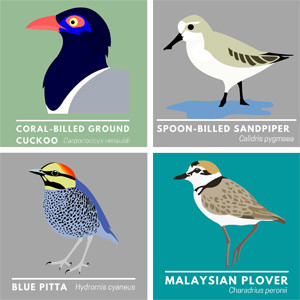By early September bird migration is well and truly in progress. For many species it has not yet reached its peak but for the next few months birders should be able to find migrating birds at any coastal location. With this in mind I made another trip to Dungeness yesterday as it can be a migrant hotspot and there had been several reports over the previous few days of some interesting species. Over the previous few days the weather had been more or less ideal for finding grounded migrants; blustery with sporadic heavy showers and patches of sunshine but unfortunately yesterday the conditions changed and were quite sunny in the morning with the winds from the wrong direction, although it did cloud over later with some showers. Still, on getting out of the car the first bird I saw was a nice Lesser Whitethroat followed by several Blackcaps, Chiffchaffs, a Sedge Warbler and a singing Willow Warbler. However, the bird I was anticipating was a White-winged Black Tern which had been reported over the previous few days.
Independent Birding at Zaamin National Park | Birding in Uzbekistan
Uzbekistan is a surprising country with a wide variety of landscapes, ancient historical monuments, some interesting food and drink as well as good infratructure that makes the country easy to travel in independently. However, my wife and I pushed this a little further than most travelers to the country by visiting Zaamin National Park where [...]
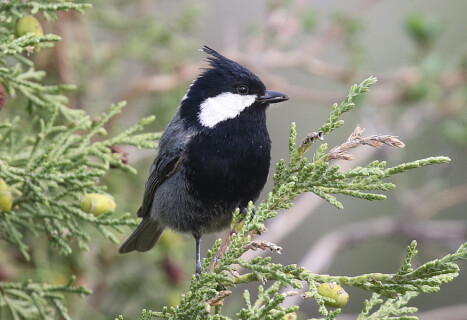

City Park Bird Abundance | Birding in Thailand
For those of us lucky enough to travel internationally to see birds it quickly becomes apparent that in some countries birds are abundant while in others birders have to work harder to see a wide range of species. This was brought home to me most recently spending a morning at Sri Nakorn Kuean Khan Park [...]
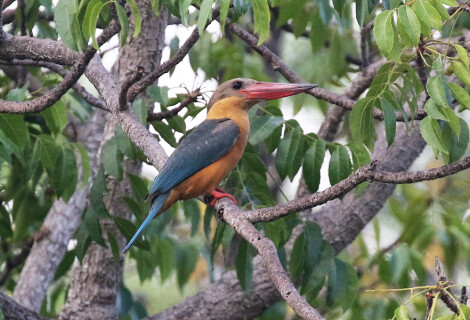

Touristing & Birding at Petra | Birding in Jordan
For those of us who travel with non-birding partners it can sometimes be tricky to balance enjoying time together somewhere interesting and the craving to maximise the opportunity to see new birds in new places. Personally, having a good holiday with my wife is the most important thing when planning trips together but doing some [...]


Rainy Season Birding at Pathum Thani Rice Research Centre | Birding in Thailand
There can be times of the year when bird watching hits a trough because a lack of activity, unhelpful weather or overfamiliarity with a smaller selection of species than at other times. In Thailand these factors are all true in the rainy season with a large number of species absent, on their breeding grounds further [...]


Mountain Birding from Chimgan | Birding in Uzbekistan
I have always loved immersing myself in mountain landscapes but over recent years my opportunity to do so has been limited with much of my time spent in tropical forests and wetlands in Thailand so when the opportunity presented itself to spend some time birding in mountain habitats in Uzbekistan I took it without having [...]
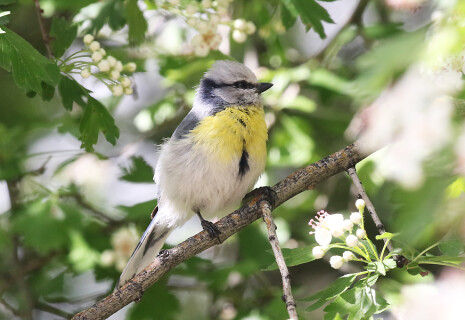

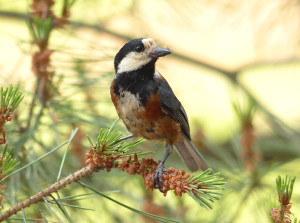
Birding at Namhansanseong, South Korea
 August 30th, 2015
August 30th, 2015  Nick
Nick In June I made a very enjoyable trip to South Korea. This was not a birding trip as we spent most of our time doing typically touristy things but before my visit I emailed Nial Moores of BirdsKorea to ask him whether there were any locations close to the capital city, Seoul, where I could spend a morning or afternoon seeing some of South Korea’s typical woodland species. He suggested visiting Namhansanseong Provincial Park which is a UNESCO World Heritage site with lots of good quality forest. The site was easily accessible by underground and then bus from central Seoul and with beautiful weather, an abundance of birds, some nice historic ruins and good food available we ended up staying the whole day.

Shellness High Tide Wader Roost: British Birding
 August 29th, 2015
August 29th, 2015  Nick
Nick Much is said about the loss of mudflats which are used by waders to feed on and in some parts of the world the result has been catastrophic to wader populations, but less frequently discussed is the pressure on waders by the loss of high tide roost sites. These sites are often destroyed as part of coastal development and even more frequently they are ruined as roost sites due to human disturbance, however, the beach at Shellness is protected as part of a national nature reserve at the Southeast of the Isle of Sheppey and it attracts thousands of waders at this time of year. With this in mind I made a visit at high tide yesterday in order to get some close up views and photos of some of the many birds that would be present.
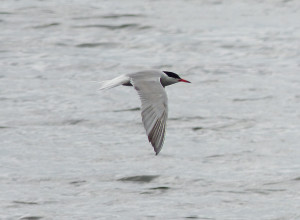
Birding in the Wind & Rain: British Birding
 August 25th, 2015
August 25th, 2015  Nick
Nick At the end of August many birds are already migrating and with southerly winds and rain forecast it seemed like it would be a good time to make another trip to Dungeness which is usually one of the best places in Kent to see migratory seabirds passing close to the shore. This time of year is usually an excellent one to see Black Tern at Dungeness and often other species including skuas and shearwaters. On arrival the weather was sunny but once I was onto the shingle beach at Dungeness the wind was quite strong; I was very grateful for the shelter the beach hide gave me where I was able to watch large numbers of birds feeding at the “patch” – the water outflow from Dungeness Nuclear Power Plant.
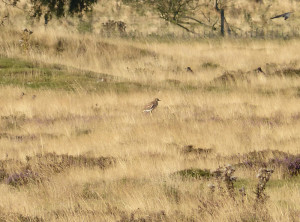
Cavenham Heath Stone Curlews: British Birding
 August 23rd, 2015
August 23rd, 2015  Nick
Nick On my way back from the British Birdwatching Fair I made a little detour to Cavenham Heath National Nature Reserve in Suffolk to search for Stone Curlews. Last year I was told about this area by another birder as a location where Stone Curlews gather before migrating and I saw quite some number of them in late September 2014 so I was interested to see if they were easily seen at this time of year. The site is part of “Breckland”, the dry stony heaths and grasslands that are unique to the Thetford area on the Suffolk/Norfolk border and when one approaches the site from the village of Tuddenham there is some woodland before the area opens up into rough grassland with patches of heather. A little scanning quickly revealed a Stone Curlew’s head above the grass but I spent more time to see how many birds I could count.
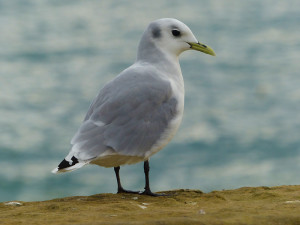
Seabirds at St Bees: British Birding
 August 16th, 2015
August 16th, 2015  Nick
Nick Doing most of my birding in Thailand I do not get to see seabirds very often; only on my visits back to UK. So, as part of my visit to the north east of England I decided to pay a visit to the RSPB’s clifftop reserve at St Bees Head well aware that it was rather too late in the year to see most of the nesting species (the peak time being May/June) but at the same time hoping that there may be a few still hanging around. Guillemot, Black Guillemot, Razorbill. Kittiwake, Fulmar and a very few Puffins breed at this location and watch points constructed by the RSPB give good views over the cliffs where the seabird colonies are situated. It turned out that in mid August rather fewer seabirds were still present than I was hoping for, but there were still some interesting species that I was able to see and get close to.
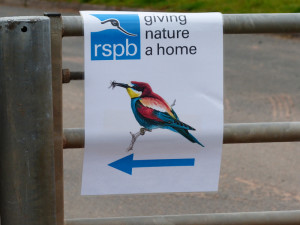
Nesting Bee-eaters in Cumbria: British Birding
 August 15th, 2015
August 15th, 2015  Nick
Nick For few weeks now the RSPB has given British birders the opportunity to watch European Bee-eaters nesting at a sand quarry near Brampton in Cumbria. Bee-eaters are a very rare breeding bird in UK and this, combined with their colourful plumage, has meant that many people have made the journey to northern England to see them. Although I am not much of a twitcher, I decided to combine a trip to see these birds with a short visit to the nearby Lake District National Park, as well as a short stop to see a Sabine’s Gull near Manchester.


